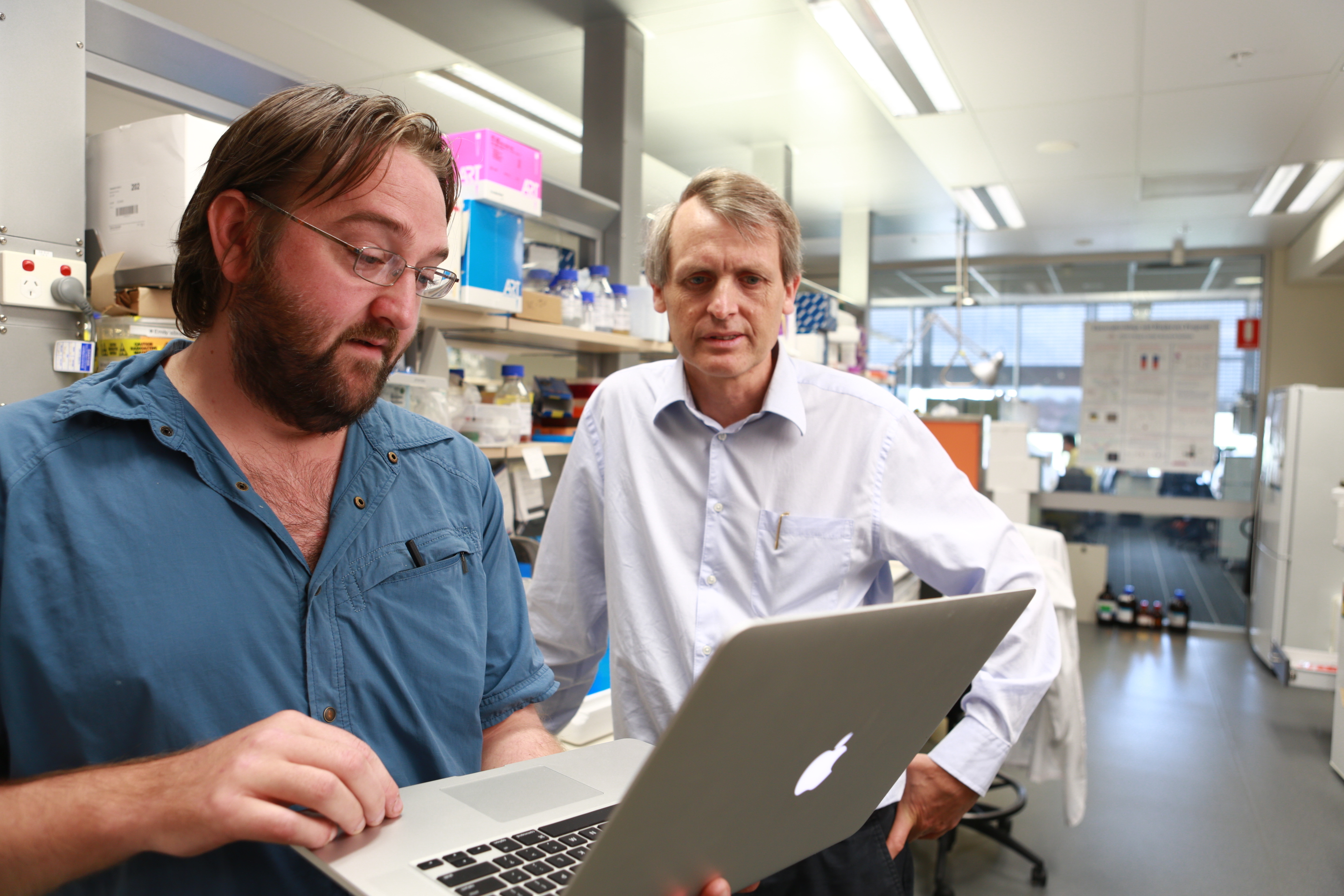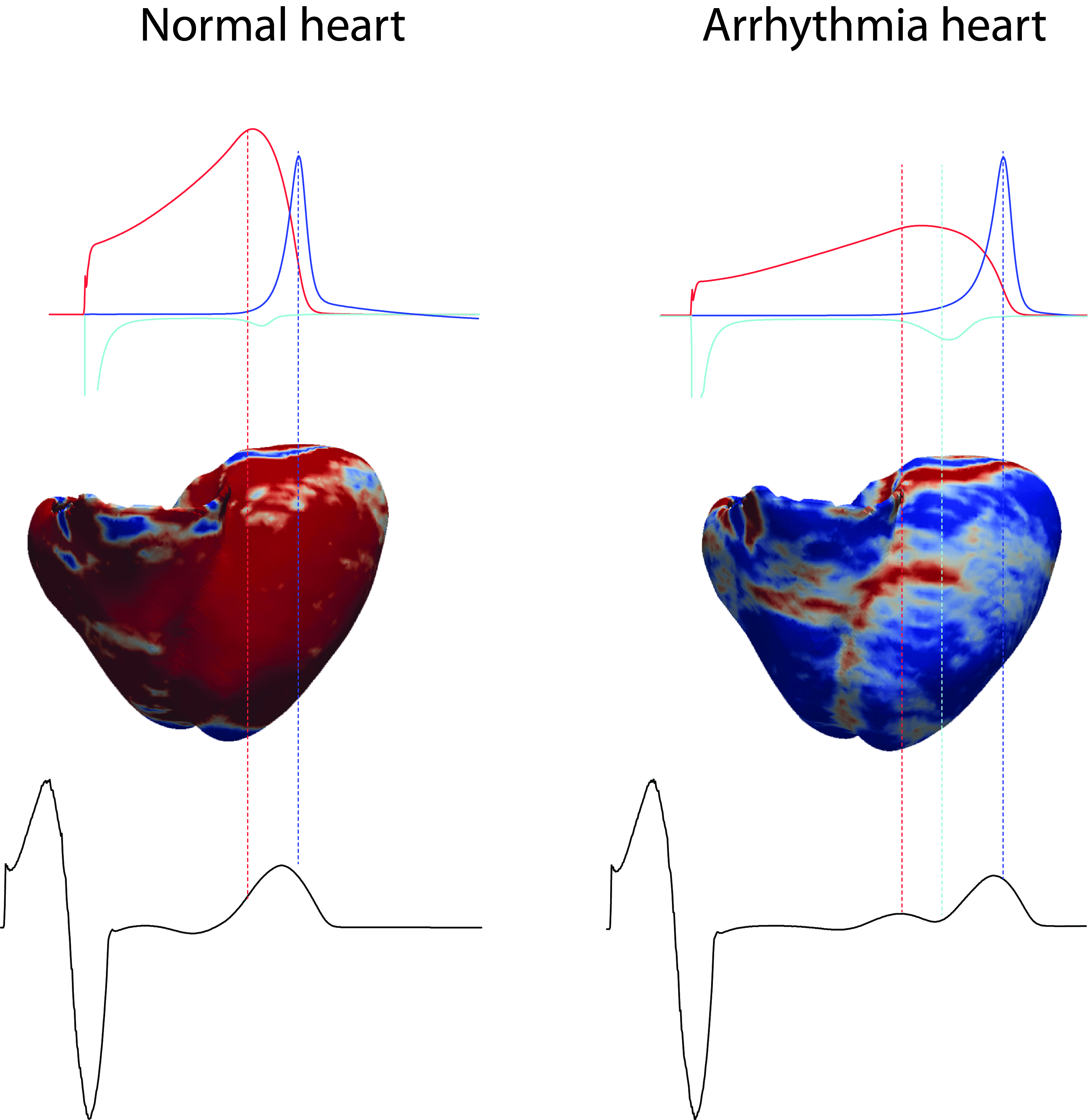Dr Adam Hill and Professor Jamie Vendenberg working on the groundbreaking technology.
Heart rhythm disease is a life-threatening, electrical disorder that stops the heart from pumping blood effectively. It is a lethal condition that is responsible for around 12 per cent of Australian deaths each year.
In order to open the door to better diagnosis and treatment for heart rhythm disease, we’ve been working with the Victor Chang Cardiac Research Institute to develop our very own ‘virtual heart’. What’s more, we’ve done this using the same technology that drives your favourite computer games.
Impressively, when we ran a simulation through the virtual heart, it was able to model hundreds of thousands of different heart beats. This then allowed scientists to screen all of those heart beats, and search for abnormalities.
According to the Victor Chang Institute’s Dr Adam Hill who led the research, this has taken us a step closer to understanding rhythm disturbances in our most vital muscle.
“This research is hugely exciting! We were able to identify why some patients have abnormal ECG signals, and how a person’s genetic background can affect the severity of their disease,” he says.
Analysis on this scale has simply never been possible before. The simulation took just ten days, thanks to the computational grunt of CSIRO’s Bragg supercomputer cluster, which combines traditional CPUs with more powerful graphics processing units or GPUs.
GPUs have typically been used to render complex graphics in computer games. However they can also be used to accelerate scientific computing by multi-tasking on hundreds of computing cores.
By comparison, if you were to try to do the same simulation using a standard desktop PC, it would take 21 years to get the job done.
Powerful and eco-friendly? This is one super computer worth Bragging about.
Adam hopes the new technology will help doctors read ECGs more accurately, which will mean faster, more accurate diagnosis of heart rhythm disease. By understanding why the same disorder affects people differently, the right treatment can be given to the right patients.
Scientists at the Victor Chang Institute are now using these discoveries to develop automatic computerised tools for diagnosing heart rhythm disorders.
Read more about how we’re using data and digital technologies to tackle health challenges on our website.





2nd February 2015 at 9:23 pm
Interessante e utile questa ricerca, è proprio il caso di dire: viva il computer!